Page 89 of 156
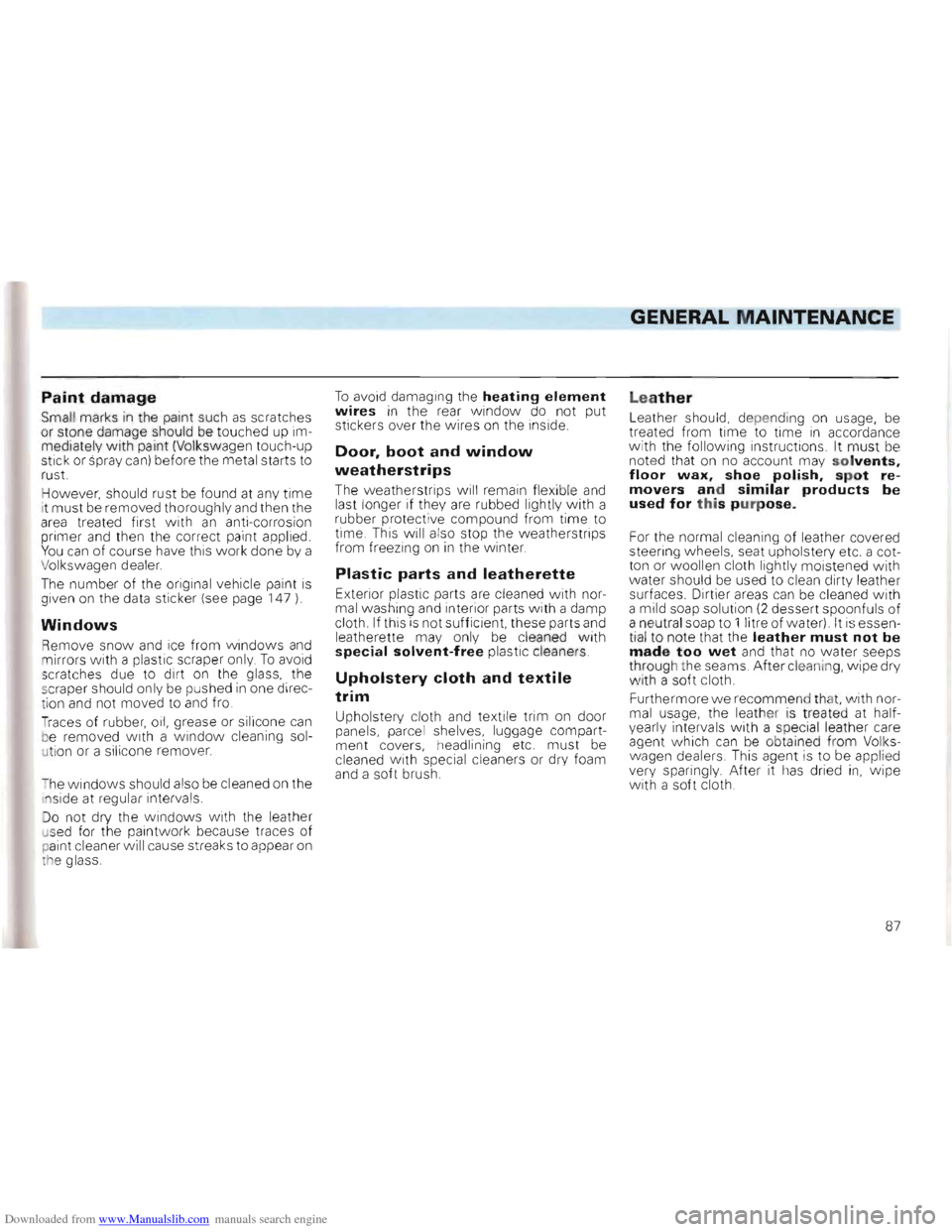
Downloaded from www.Manualslib.com manuals search engine GENERAL MAINTENANCE
Paint damage
Small marks in the paint su ch as scratches
or stone damage should be touched up im
mediately with paint (Vol kswagen touch-up
stick or spray can) before the meta l starts to
rust.
H
owever, should rust be fou nd at any time it must be remo ved thoroughly and then the
area treated first with an ant i-corrosion
p rimer and then the correct pain t applied .
Y
ou can of course have this work done by a
V olkswagen dealer.
T he number of the original vehicl e paint
is given on the data sticke r (see page 147 )
Windows
Remov e sno w and ice from w indows and mirrors with a p lastic scraper only To avoid
s cratches due to dirt on the glass , the
s c raper should only be pushed in one direc
t ion and not moved to and fro.
Traces of rubber , oil, grease or silicone can
b e remo ved with a window cleaning solution or a si lic one remover.
- he
windows sho uld also be cleaned on the
n side at regular intervals.
0 0 not dry the w
indows with the leather
u sed for the paintwork because traces of paint cleaner wil l cause streaks to appear on the glass.
To avoid damaging the heating element wires in the rear window do not put
stickers over the wires on the inside.
Door, boot and window
weatherstrips
The w eatherstrips will rema in fle xible and last longer if the y are rubbed lightly with a
rubb er protec tive compound from time to
time . This will also stop the weatherstrips
from freezing on in the w inter.
Plastic parts and leatherette
Exterior plastic parts are cleaned with normal w ashing and interior parts wit h a damp
cloth. If this is not suff ic ient. these parts and
leatherette may only be cleaned with special solvent-free plastic cleaners.
Upholstery cloth and textile
trim
Upho ls tery cloth and textile trim on door
panels, parcel shelv es, lu ggage compart
ment co vers , h eadlining ete.
must be cleaned with special cleane rs or dry foam
and a soft brush .
Leather
Le athe r shou ld, depe nding on usage, be
treated from time to tim e in ac cordance with the follo wing instruc tions. It mus t be
not ed t hat on no account may solvents,
f loor w ax, shoe polish, spot remo vers and similar products be used for this purpose.
For the norma l clean ing of leather covered
steering wheels, seat upholstery etc . a cot
ton or woollen cloth lightly moistened
with w ater should be used to clean dirty leath er
surfaces. Dirtie r areas can be cleaned with a mild soap solution (2 dess er t spoonfuls of
a neutral soap to 1 litre of water) . It is essen
t ia l to note that the leather must not be made too wet and that no water seeps
th roug h th e seams . After cleaning, wipe dry with a soft cloth .
F u rthermore we recomme nd th a
t. w ith nor
mal usage, the leat her is treat ed at half
y ear ly interva ls with a special leather care
age nt which can be obtained from Volkswagen dealers. This age nt is to be app lied
very sparingly. After it has dried in, wipe w ith a soft cloth.
87
Page 90 of 156
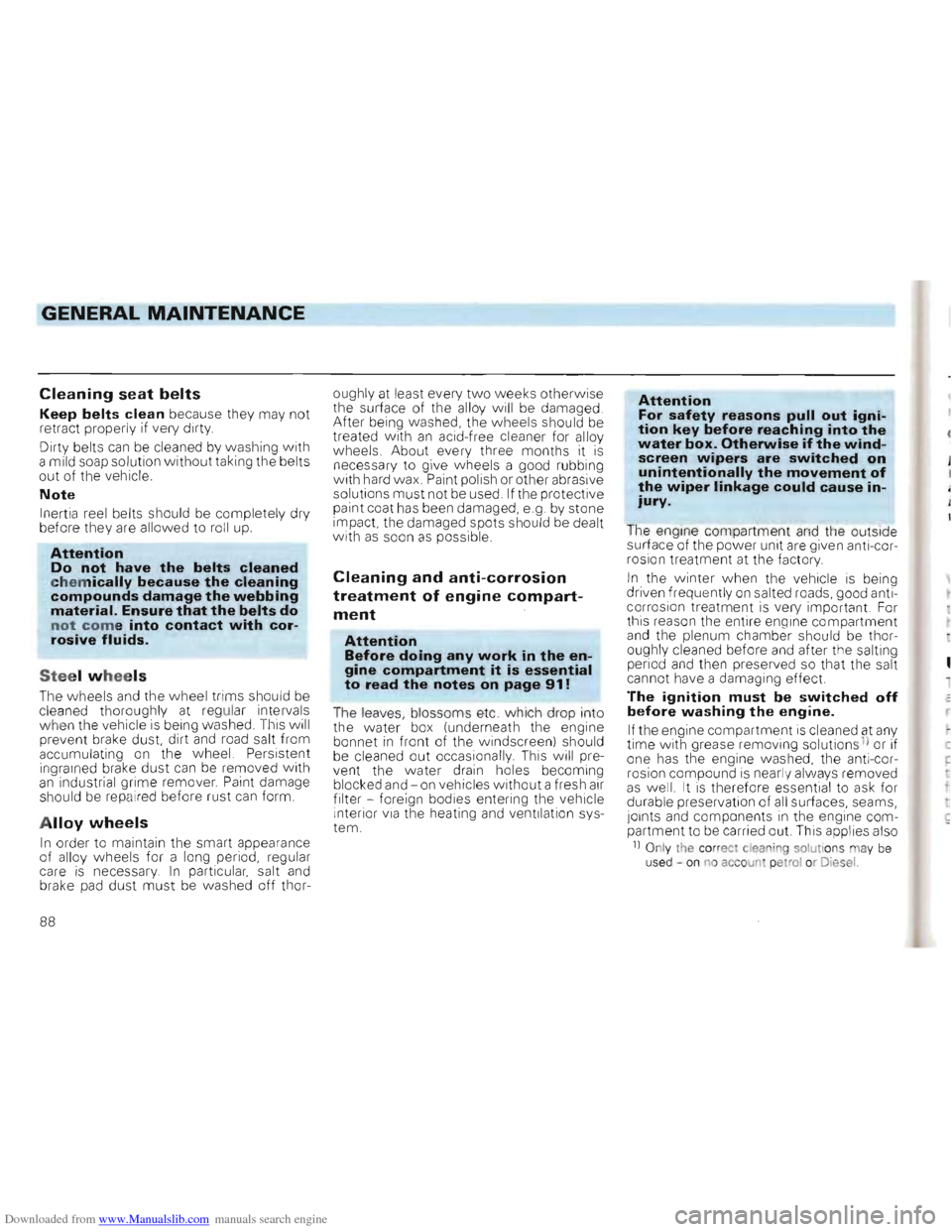
Downloaded from www.Manualslib.com manuals search engine GENERAL MAINTENANCE
Cleaning seat belts
Keep belts clean because they ma y not
retract properly if very dirty .
Dirt y be
lts can be cleaned by was hing w ith
a mild soap solutio n without taking the belts
out of the vehicle.
Note
Inert ia reel belts should be completel y dry
before they are allowed to roll up.
Attention Do not have the belts cleaned chemically because the cleaning compounds damage the webbing material. Ensure that the belts do not come into contact with corrosive fluids.
Steel wheels
The wheels and the whee l tr ims should be
cle aned thoroughly at regular inter vals w hen the vehicle is being washed. This w ill
prevent brake dust , dirt and road salt from
accu mulating on the wheel. Persistent
ingr ained brake dust can be removed With an industrial grim e remov er. P aint damage
should be repaired before rust can form.
Alloy wheels
In order to maintain th e smart appearan ce
of all oy wheels for a long period, regular
car e is necessary . In particular, salt and brake pad dust must be washed off th or ough
ly
at leas t every tw o w eeks otherwise
the surface of the alloy Will be damaged
After being w ashed, the w heels shou ld be treated with an acid-free cleaner for al loy wheels. About every three months it is necessary to give wheels a good rubbing
w ith hard wax. Paint polish or other abrasiv e
solutions must not
be used. If the protecti ve
paint coat has been damaged , eg. by stone
impact, the damaged spots should be dealt with as soon as possible.
Cleaning and anti-corrosion
treatment of engine compart
ment
Attention Before doing any work in the engine compartment it is essential to read the notes on page 91!
The leaves, blossoms etc . w hich drop into
the water box (underneath the engine
bonnet
in f ront of the windscreen) should
be cleaned out occasional ly This w ill pre
v ent the water drain holes becoming
blocked
and -on veh ic les w ithout a fresh air
filter -foreign bodies entering the vehicle
interior v
ia the heating and ventilat ion sys
tem.
Attention For safety reasons pull out ignition key before reaching into the water box. Otherwise if the windscreen wipers are switched on unintentionally the movement of the wiper linkage could cause injury.
The engine compartment an d th e outsi de
surface of the power unit are given anti-cor
rosion treatment at the factor y.
In th e winter w hen the vehicle is being
driven frequ entl y on salted roads, good anti
corrosion treatment is very important. For
th is reason the entire engin e comp
artment and the plen um chamber should be thor
ough ly cleaned before and after the salting
period
and then preserved so that the salt cannot have a damag ing effect
The ignition must be switched off before washing the engine.
If the engine compartment is cle aned at any
time with greas e removing solution s 1) or if
one has the engine washed, the anti-cor
rosion compound is nearly alwa ys removed as wel l. It is the refore essential to ask for
durable preserv ation of all surfaces, seams,
joints and components in the engine compartment to be carried out. This applies also
1) Only the corre e clean ing solutions may be use d -on no aecoun petrol or Diesel.
88
Page 91 of 156
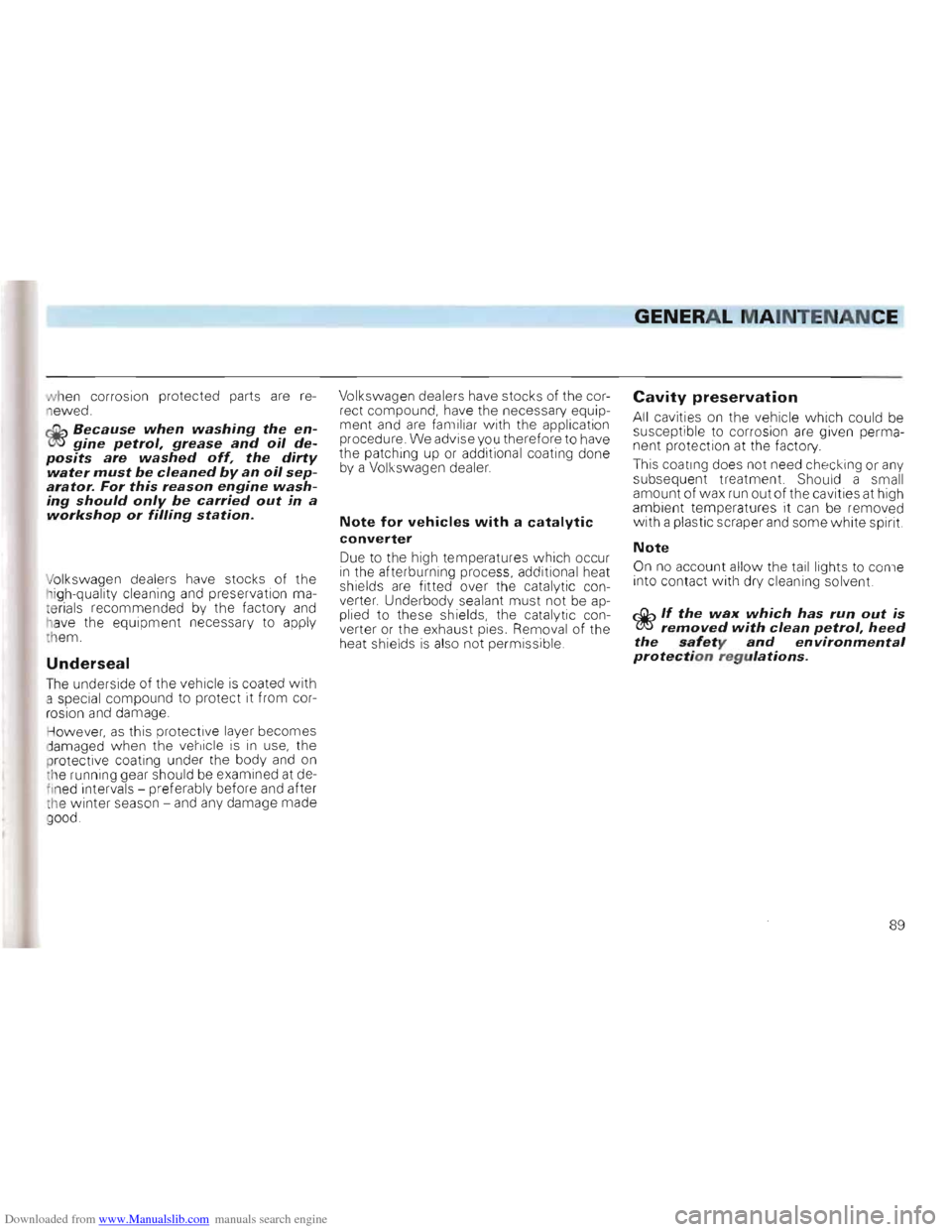
Downloaded from www.Manualslib.com manuals search engine GENERAL MAINTENANCE
w hen corrosion protected parts are reewed.
dih Because when washing the en~gine petrol, grease and oil deposits are washed off, the dirty water must be cleaned by an oil separator. For this reason engine washing should only be carried out in a workshop or filling station.
\folkswagen dealers have stocks of the
h igh-quality cleaning and prese rvation ma
te rials re commended by the factory and
have the equipment ne cessary to appl y them .
Underseal
The under side of the vehicle is coated with a special compound to protect It from cor
rosion and damage .
H ow ever,
as this protective layer becomes
a m aged when the ve hicle is in use , the
p rotecti ve coating under the body and on
t h e runn ing gear should be examined at de
fi ned inter vals -prefer ably befo re and after the winter season -and any damage made
g ood. Volksw
agen dealers have stocks of the cor
rect compound,
have the necessary equip
ment and are famil iar w ith th e application
proc edure . We advise you ther efore to have
the patching up or additional coating done by a Vol ksw agen dealer.
Note for vehicles with a catalytic
converter
Due to the high temperatures which occur in the afterburning process, additional heat
shi elds are fitted over the catalytic con
v e rter. Underbodysealant must not
be applied to the se shields, the catal ytic con
v erter or the exhaust pies. Remo val of the
heat shields is also not permissible .
Cavity preservation
All cavities on the vehicle which could be susceptible to corros ion are given perma
nent protect ion at the factory.
This coating does not need check i
ng or any
subsequent treatment. Should a small
amount
of wa x run out of the cavities at high
ambient te mperatures it can be re moved
with a plastic scraper and some white spirit.
Note
On no account allow the tail lights to com e
Into contact with dry cleaning solvent.
If the wax which has run out is removed with clean petrol, heed the safety and environmental protection regulations.
89
Page 92 of 156
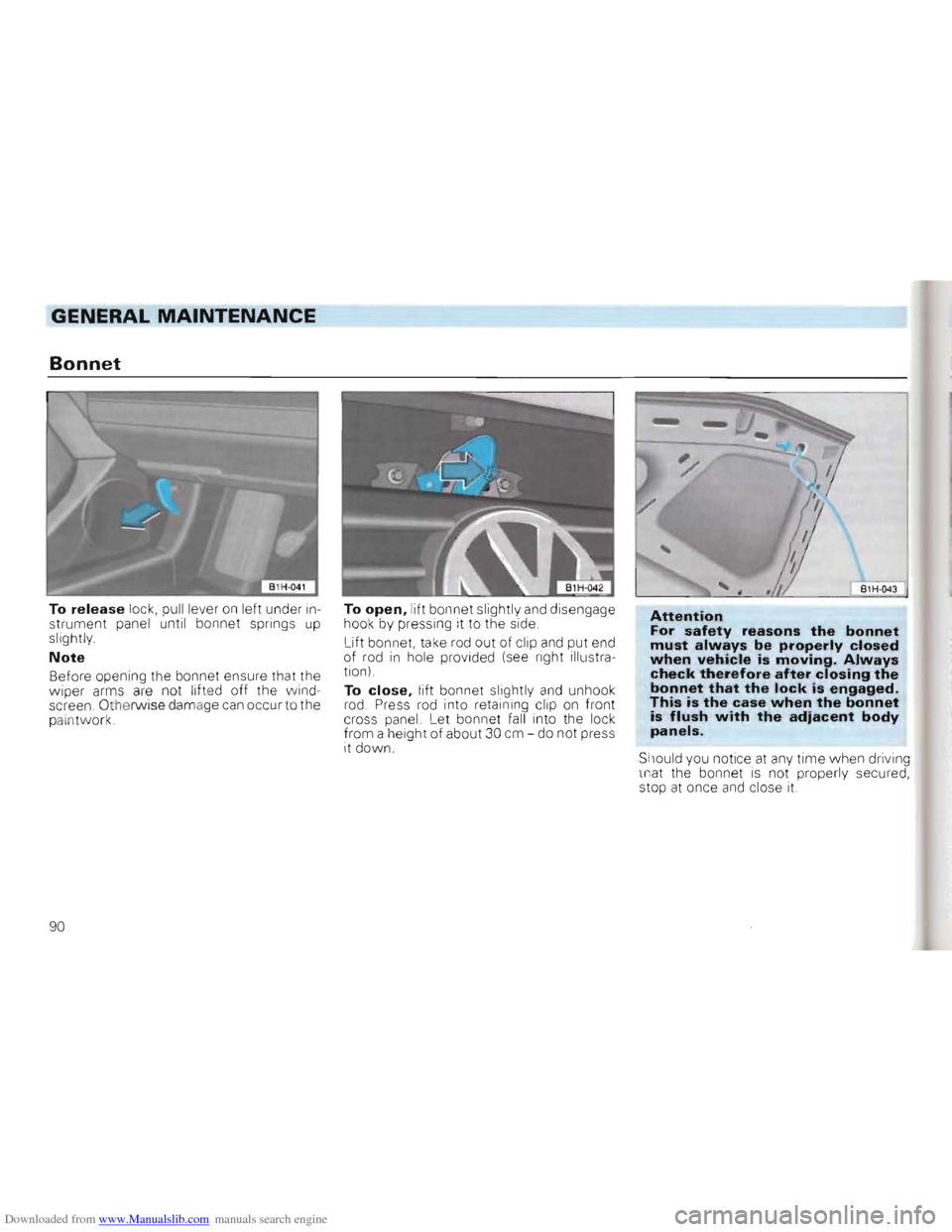
Downloaded from www.Manualslib.com manuals search engine GENERAL MAINTENANCE
Bonnet
To release lock, pull lever on left under in
strument panel until bonnet springs up slightly.
Note
Before opening the bo nnet ensure that the
wiper arms are not lifted off the wind
screen. Othe rwise damage can occur to the
palntwork. To
open, lift
bonnet slightly and disengage
hook by pressing it to the side.
Lift bonnet, take rod out of
clip
and put end
of rod in hole provided (see right illustra
tion)
To
close, lift bonnet slightly and unhoo k
rod. Press rod into retaining cl ip on front
cross panel. Let bonnet fall into the lock
from a height of about 30 cm -do not press
it down.
B1H -043
Attention For safety reasons the bonnet must always be properly closed when vehicle is moving. Always check therefore after closing the bonnet that the lock is engaged. This is the case when the bonnet is flush with the adiacent body panels.
Should you notice at any time when driving
that the bonnet is not properly secured,
stop at once and close it.
90
Page 93 of 156
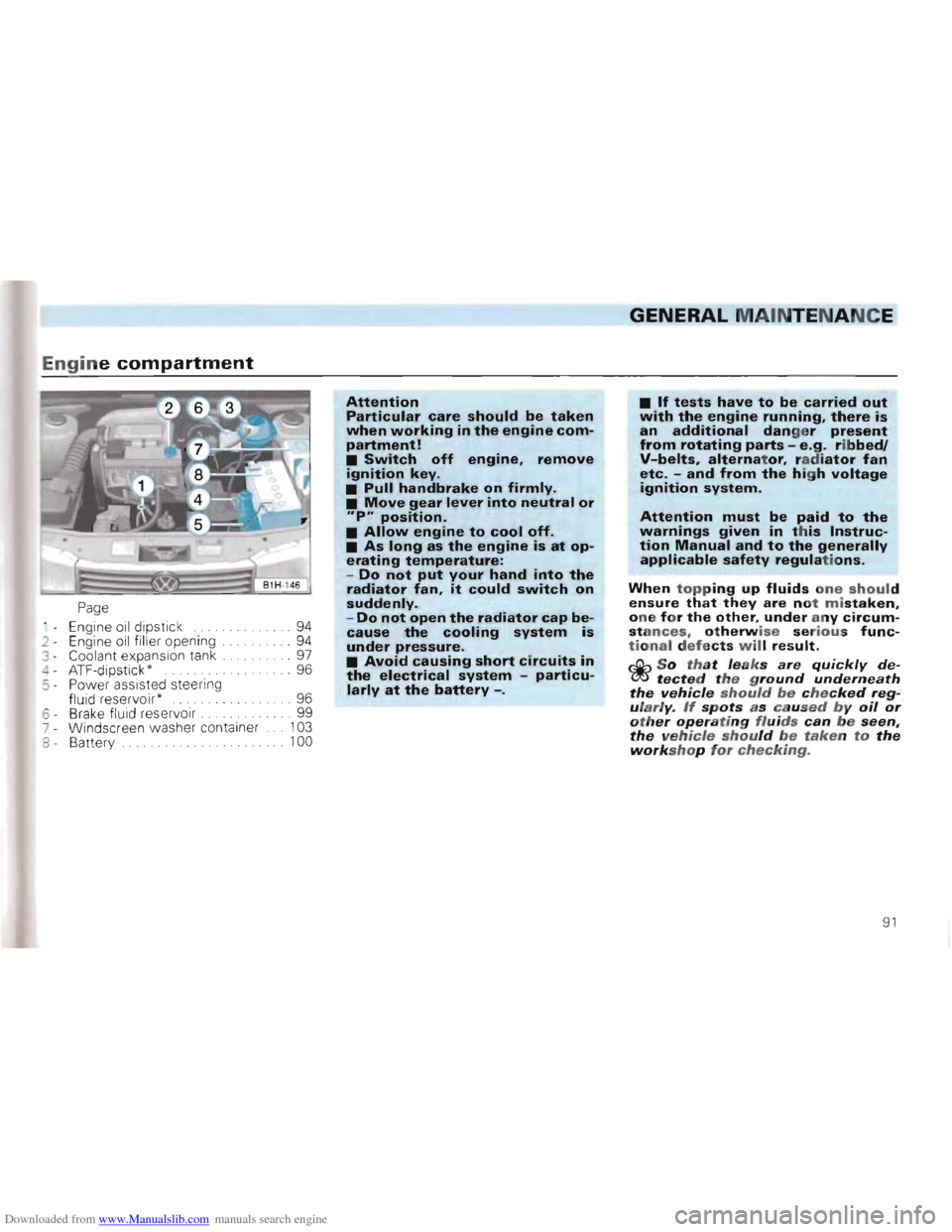
Downloaded from www.Manualslib.com manuals search engine GENERAL MAINTE NA NCE
Engine c ompartmen t
Page
Engine oil dip sti ck . . 94
2 - Eng ine o
il filler openi ng ... ...... . 94
3 - Coolant exp ansion ta nk .. 97
4 -ATF-dip sti ck " . . . . . . . . . . . .. . 96
5 - Power assist ed steering flu id r eservoir '
6 Brak e fl uid re se rvo ir .
7 - Wi nd sc reen w ash er c on tainer
8 Battery .
Attention
Particular care should be taken
when working in the engine com
partment!
• Switch off engine. remove ignition key_
•
Pull handbrake on firmly.
• Move gear lever into neutral or
"P" position.
• Allow engine to cool off.
• As long as the engine is at op
erating temperature:
-Do not put your hand into the
radiator fan. it could switch on
suddenly.
-Do not open the radiator cap be
cause the cooling system is
under pressure.
• Avoid causing short circuits in
the electrical system -particu
larly at the battery -.
. .. 96
. .. 99
10 3
100
• If tests have to be ca rried o ut with the engine running. there is an additional dang e r present from rotating parts - e.g . ribbedl V-belts, alternator, ra d iator fan etc. -and fro m the high voltage ignition system.
Attention m ust be paid to the w arn ings given in this Instruction Manual and to the generally ap plicable safety regulations.
When topp ing up fluids one should ensure that they are not mistaken. one for the other, under any circum stances. otherwise serious fu nctional defects will result.
rJjh So that leaks are quickly de(!J!J tected the ground underneath the vehicle should be checked regularly. If spots as caused by oil or other operating fluids can be seen, the vehicle should be taken to the workshop for checking.
91
Page 94 of 156
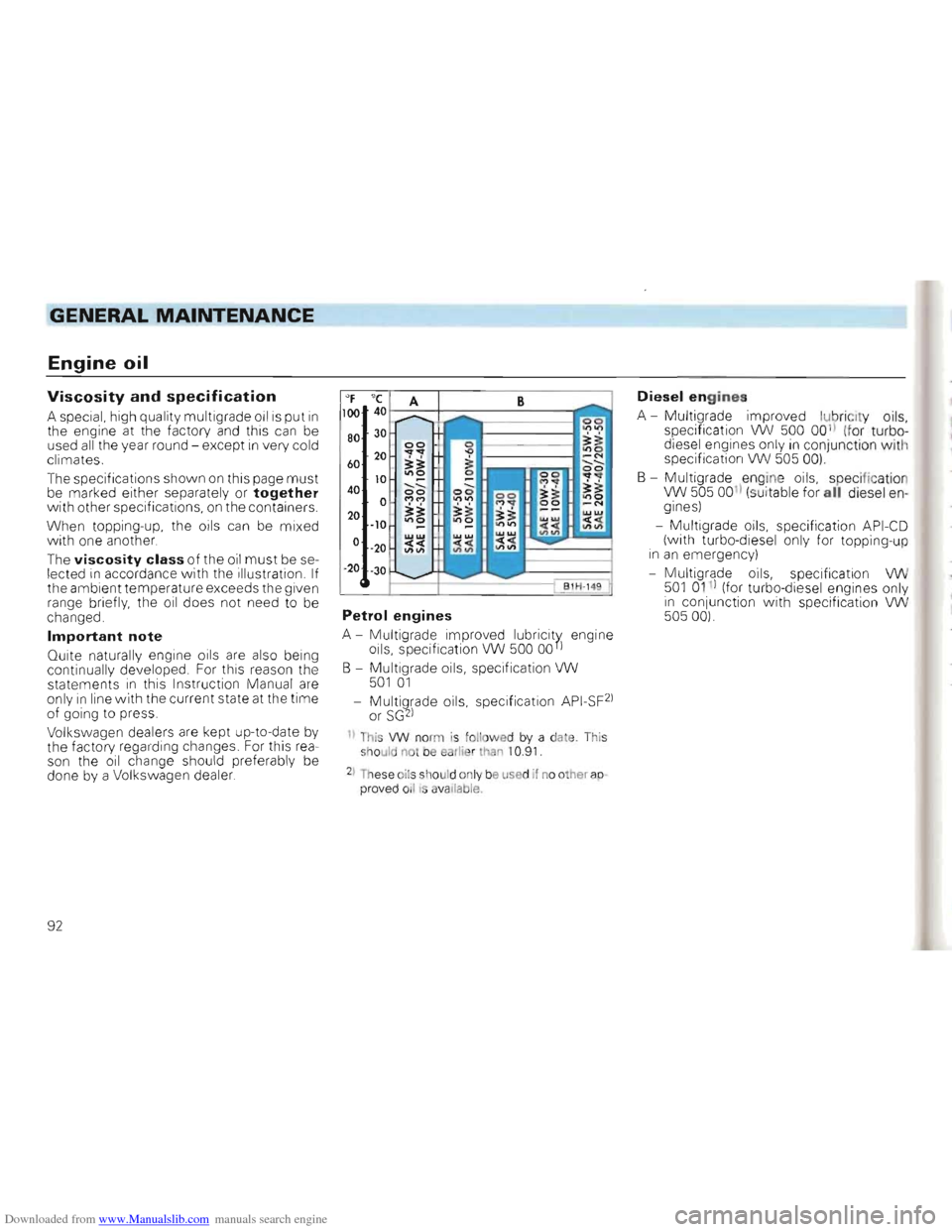
Downloaded from www.Manualslib.com manuals search engine GENERAL MAINTENANCE
Engine oil
Viscosity and specification
A special, high quality multigrade oil is put in
the engine at the factory and this can be
used all the year round -excep t in very cold
climates .
The specifications
shown on this page must
be marked either separately or toget her
with other specifications, on the containers.
When topping-up, the oils can be mixed
with one another .
The
viscosity class of the oil must be se
lected in a cc ordan ce with the illu stration. If
the ambient temperature exceeds the given
range briefly, the oil does not need to be
changed.
Important note
Quite naturally engine oils are also being
continually developed. For this reason the statements in this Instruction Manual are
only in line with the current state at th e time of going to press.
Volkswagen dealers are kept up-to-d ate by
the factory regarding changes. For this rea
son
the oil change should preferably be
done by a Volkswagen dealer.
80
60 20
10 40 -----00 0 MM
20 ?:?: -10 ,,",0
0 -
20
- 20
Petrol engines
A - Multigrade improved lubricity engine
oils, specification VW 500 OOn
B -Multigrade oils, specification \lW 501 01
-Multigrade oils, specification API-SF2)
or SG2)
1) Thi s VW norm is follow ed by a date . This should !'lOt be earlie r than ) 0 .91.
21 These oil s shou ld on ly be use d if n o other ap
pr oved oil I S ava ilable.
Diesel engines
A -Multigrade improved lu bricity oils,
specification VW 500 001) (fo r turbo
diesel engines only in conjuncti on with
specification VW 505 00)
B -
Multigrade engine oils, speci ficatio n VW 505 00) (sui table for all diesel en
'
gines)
- Multigrade oils, specification API-CD
(with turbo-diesel only for topping -u p in an emergency)
- Multigrade oils, specification
VW 501 0 1 ) (for turbo-di ese l engines only
'
i n conjunction w ith specif ication VW 50500).
92
Page 95 of 156
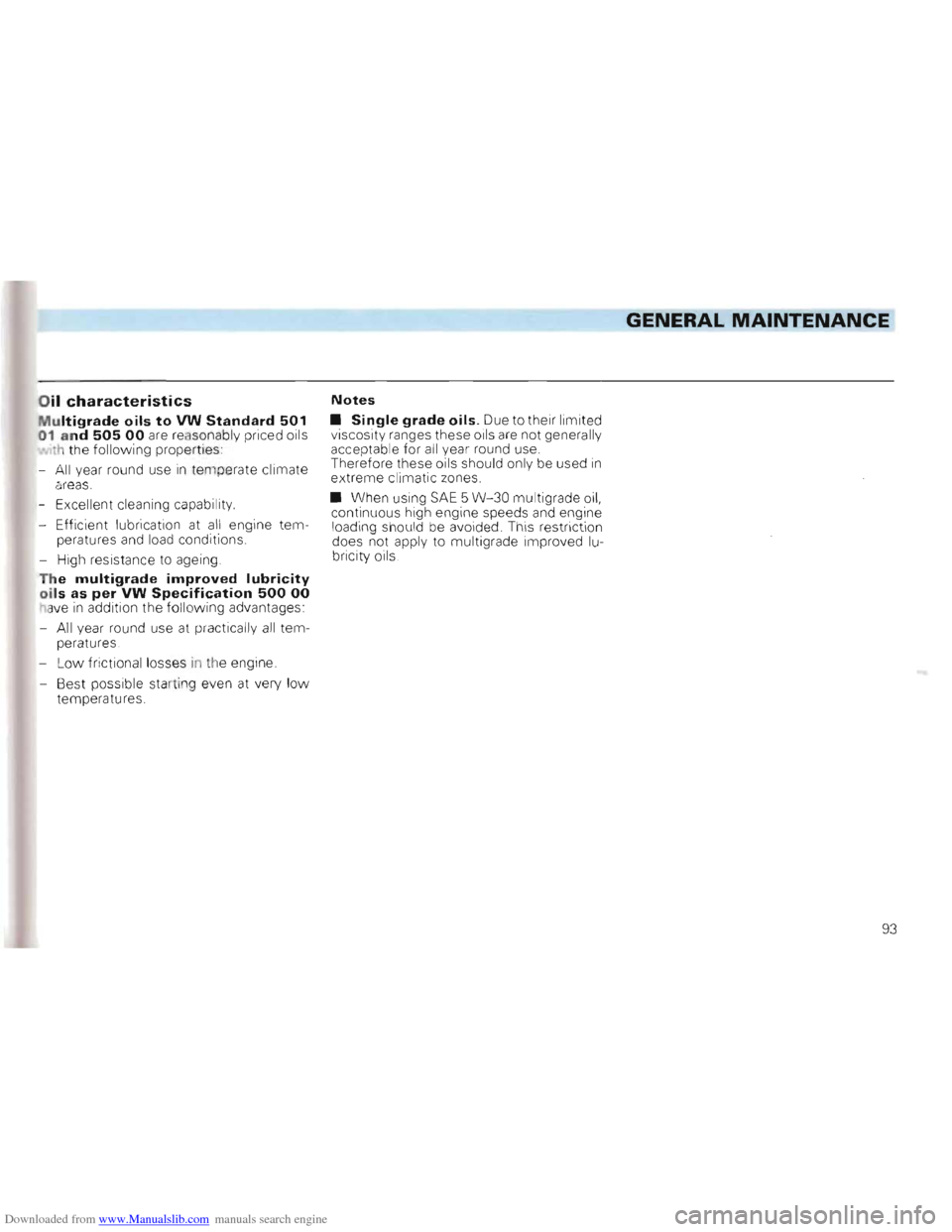
Downloaded from www.Manualslib.com manuals search engine GENERAL MAINTENANCE
Oil characteristics
Mult igrade oils to VW Standard 501 01 and 505 00 are reasonably priced oils
. h the following properties
-
Al l year round use in temper ate climate
a reas .
- Excellent cleaning capability.
- Efficient lubrication at
all engine tem
peratures and load conditions.
- High resistan ce to
ageing.
The multigrade improved lubricity oils as per VW Specification 500 00 h ve in addition the follo wing advantages:
- All yea r rou nd use at pra ctically
all tem
peratures.
- L
ow frictio na l losses in th e engine
- Best possible starting even at very l
ow temperatu res.
Notes
• Single grade oils. Due to their limited
viscosity ranges these oils are not generally
acceptable for all year round use .
Therefore these oils should only be used in extreme climatic zones.
• When using SAE 5 W-30 multigrade oil,
continuous high engine speeds and engine
loading should be avoided . Thi s restriction
does not apply to multigrad e improved lu
bricity oils .
93
Page 96 of 156
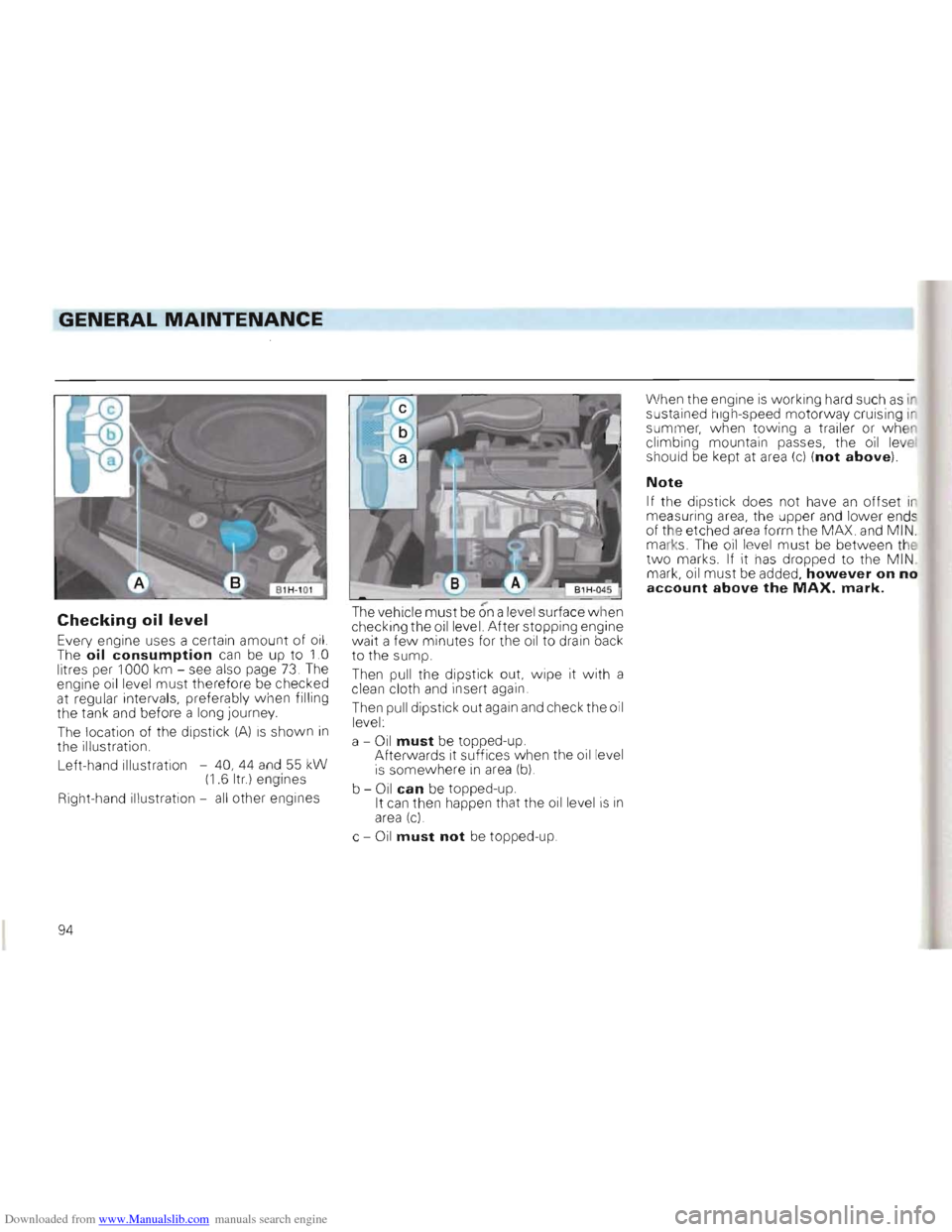
Downloaded from www.Manualslib.com manuals search engine GENERAL MAINTENANCE
Checking oil level
Every eng ine uses a certain amount of oil. The oil consumption can be up to 1.0
litr es per 1000 km -see also page 73. The
engine oil l eve l must therefore be ch ecke d
a t regula r int ervals, preferab ly w hen fillin g
the tank and before a long Journey.
The locat ion of the dipst ick (A) IS shown in th e illustration.
Left-hand illustration -40 , 44 an d
55 kW (1 .6 Itr) en gi nes
Right-hand illustration -
all other engines
The ve hicle must be on a leve l surface when checking the oil level. A fter stopping engine
wa it a fe w minutes for the oil to drain back
to the sum p.
T hen pu ll the dipstick out, wipe it with a
clean cloth and insert again
Then pull dipstick out again
and check th e oi l
level :
a -
Oil must be topped-up.
Afterwards it suffices when the oil level
is somewhere in area (b)
b -Oil can be topped-up.
I t can then happen that the oil level is in area (c)
c -Oil must not be topped-up. When
the engine
is working hard such as ir
sustained high-speed motorway cruisin g in
summer, when towing a trailer or w he n
c limbing mountain passes , the o
il lev e! should be kept at area (c) (not above).
Note
If t he dipstick does not have an offset in
meas uring area, the upper and lower ends
of the etched area forrn the MAX. and MIN .
marks. The oil level must be between the two marks. If it has dropped to the M I N . mark, oil mu st be added, however on no account above the MAX. mark.
94
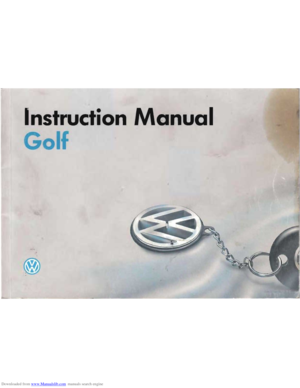 1
1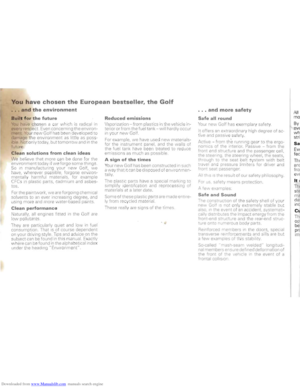 2
2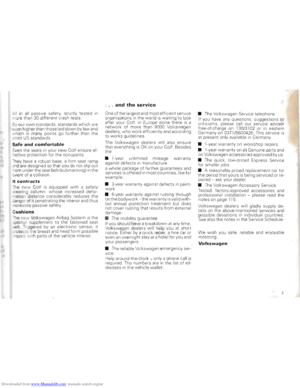 3
3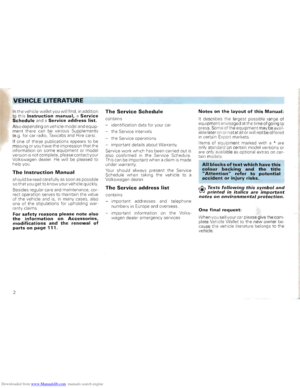 4
4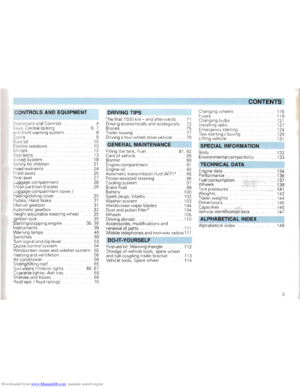 5
5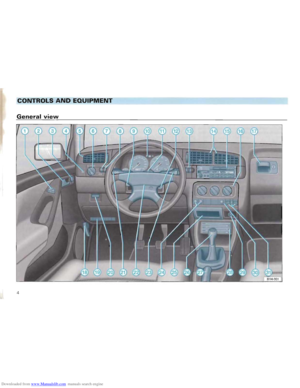 6
6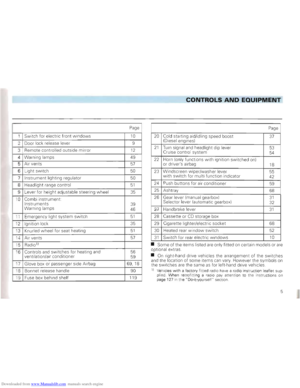 7
7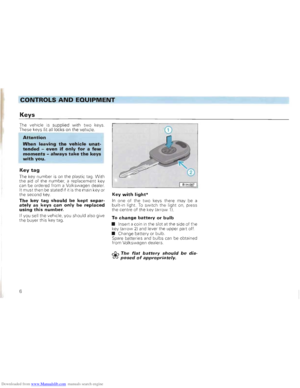 8
8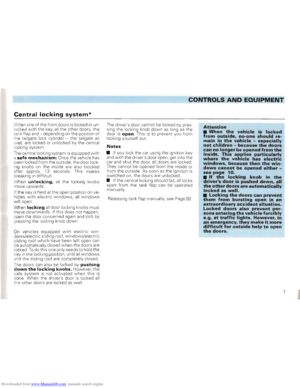 9
9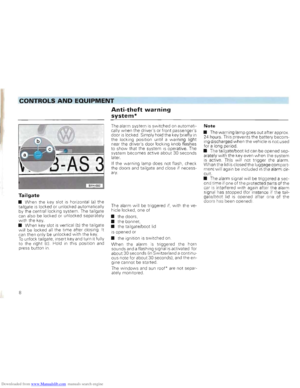 10
10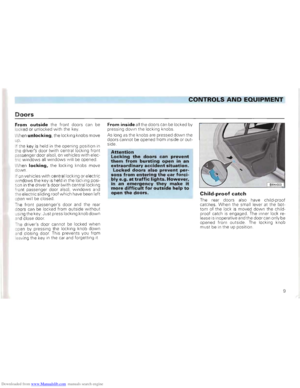 11
11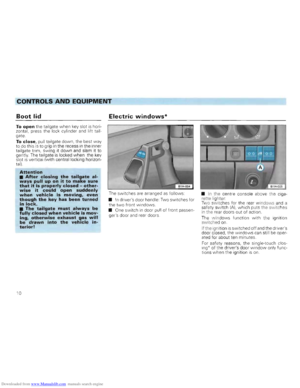 12
12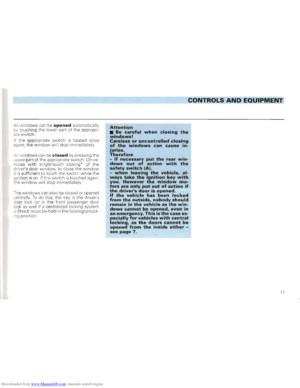 13
13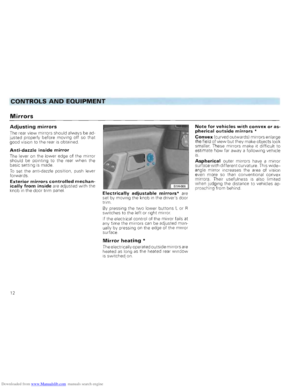 14
14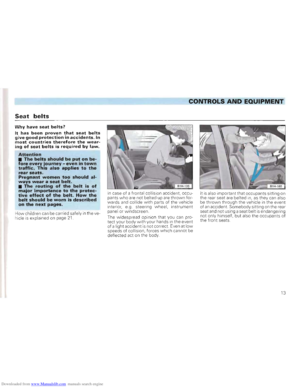 15
15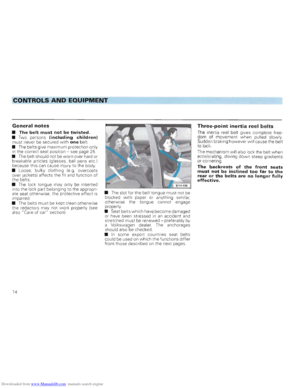 16
16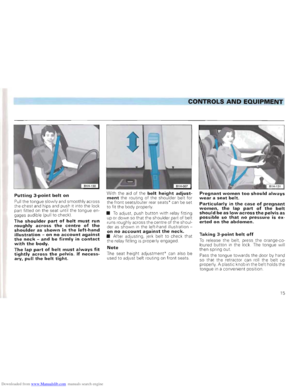 17
17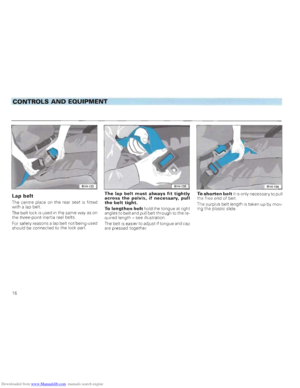 18
18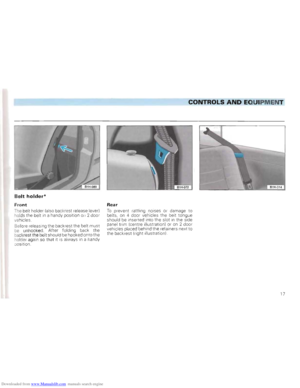 19
19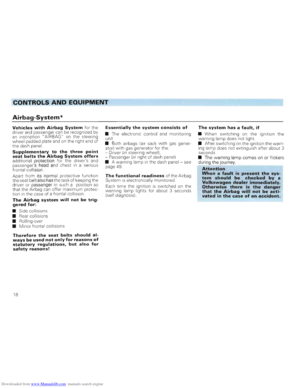 20
20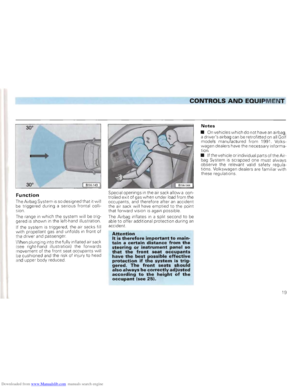 21
21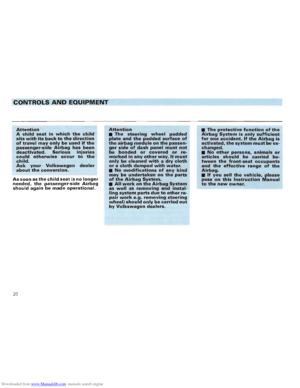 22
22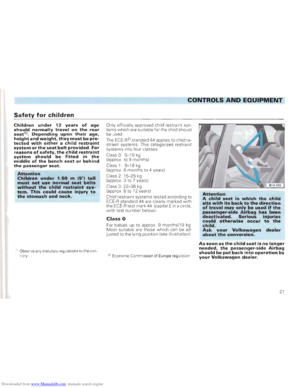 23
23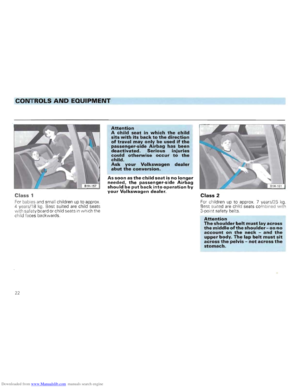 24
24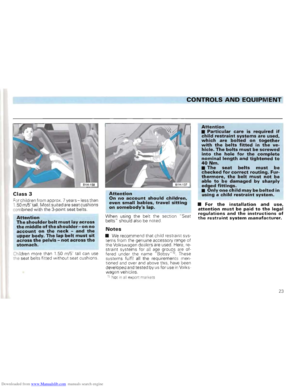 25
25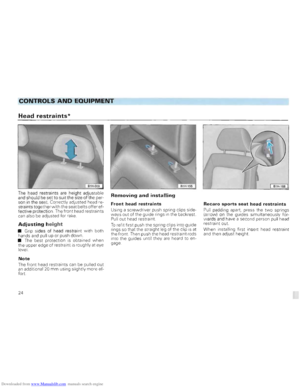 26
26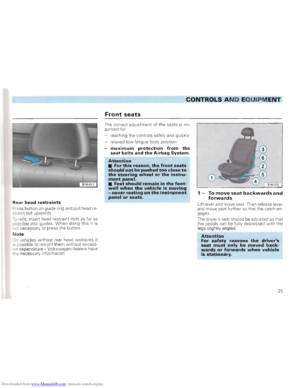 27
27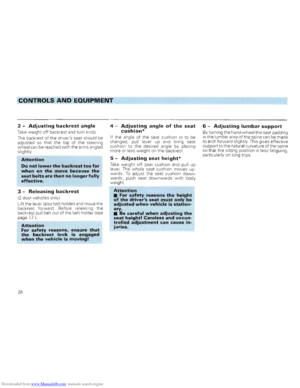 28
28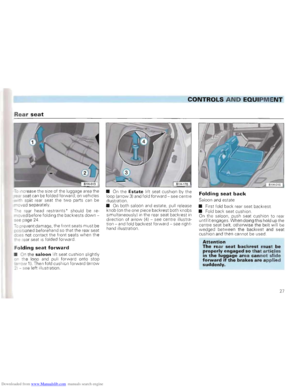 29
29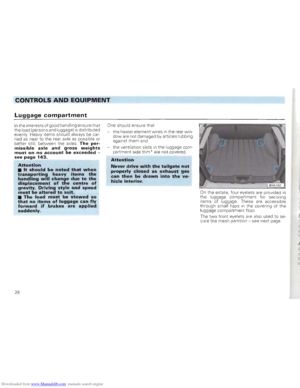 30
30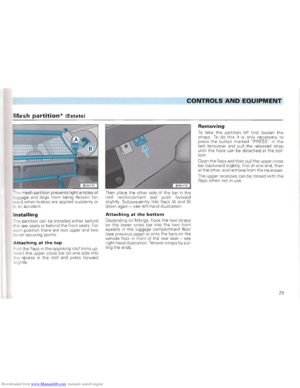 31
31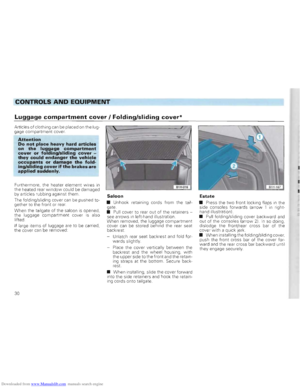 32
32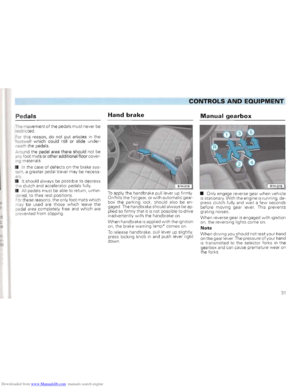 33
33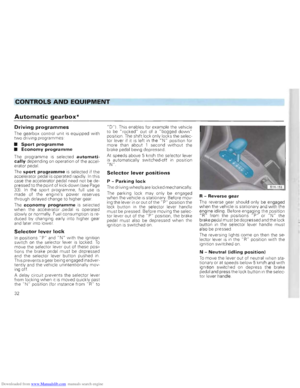 34
34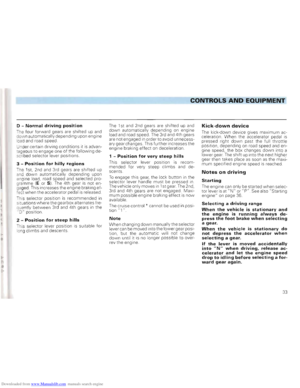 35
35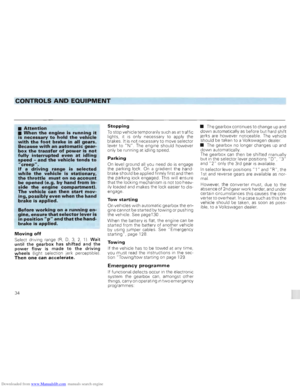 36
36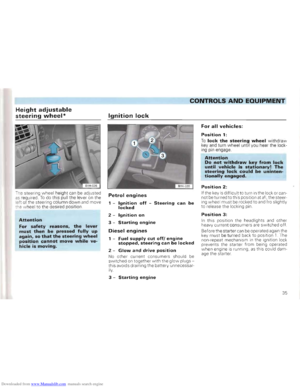 37
37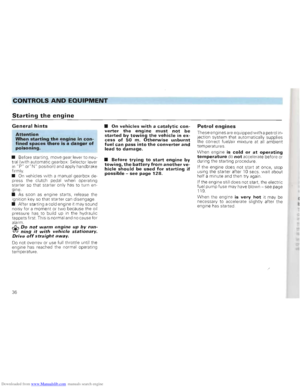 38
38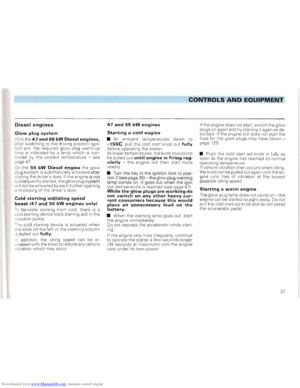 39
39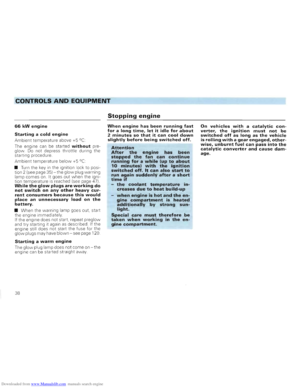 40
40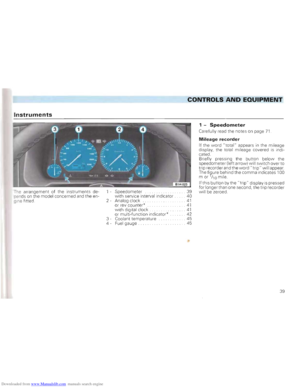 41
41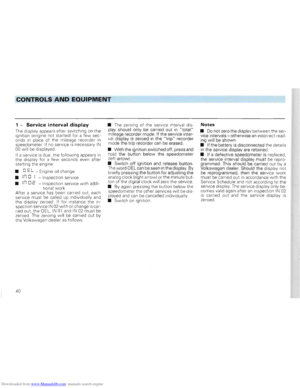 42
42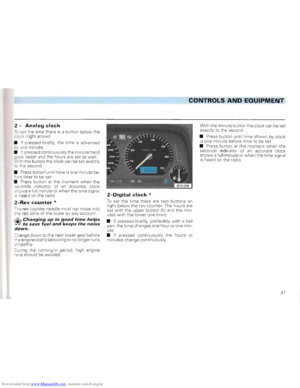 43
43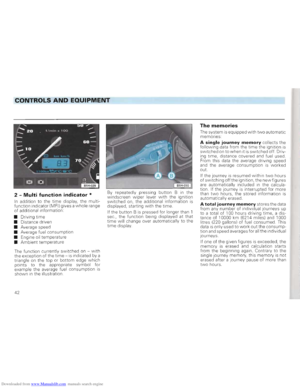 44
44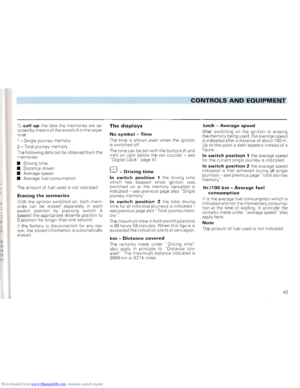 45
45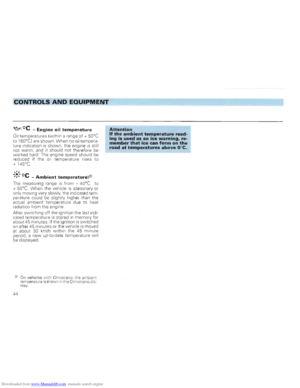 46
46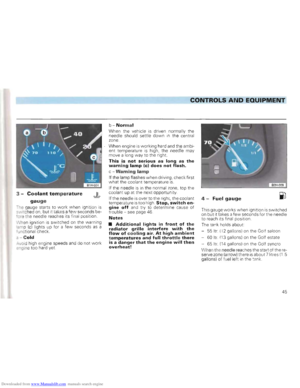 47
47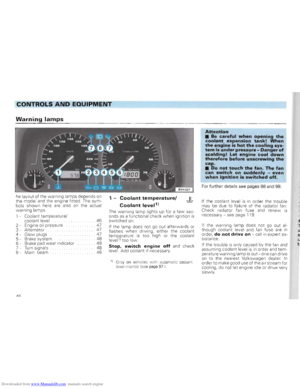 48
48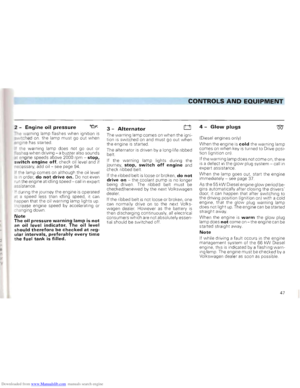 49
49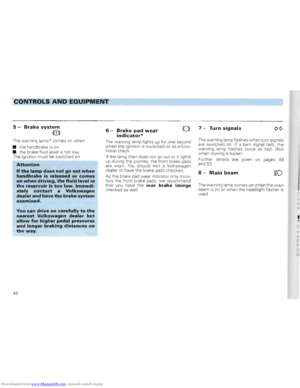 50
50 51
51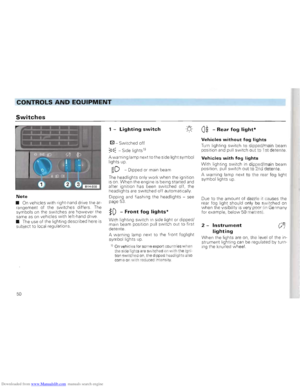 52
52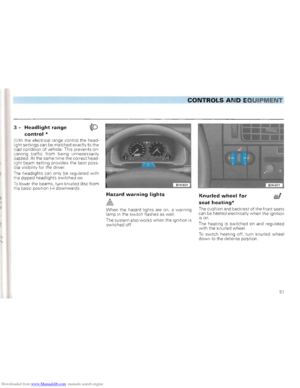 53
53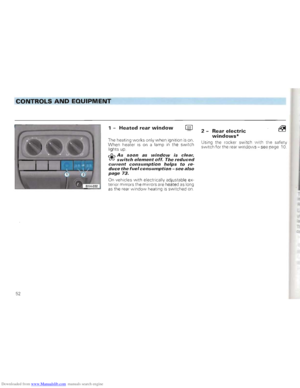 54
54 55
55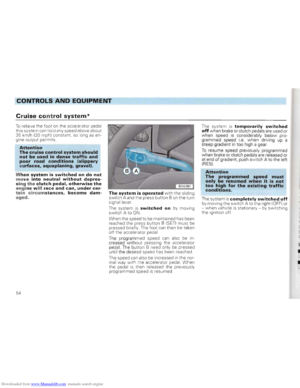 56
56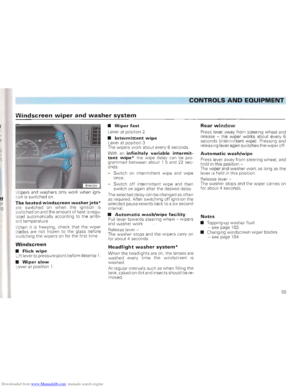 57
57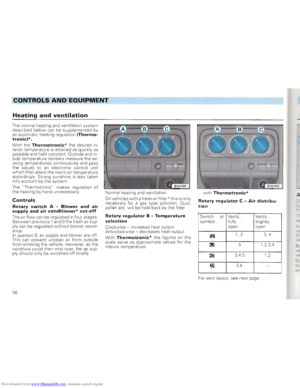 58
58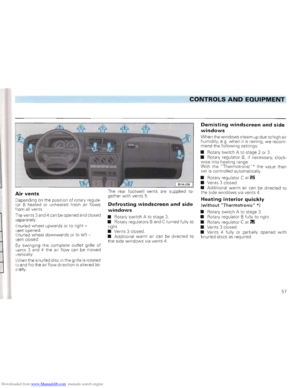 59
59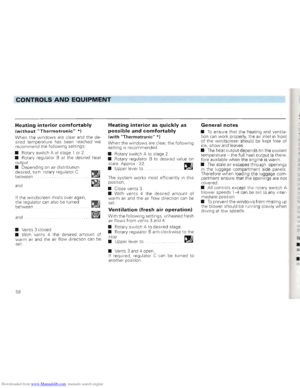 60
60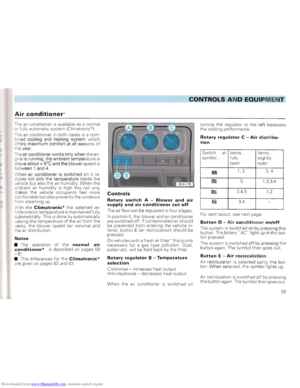 61
61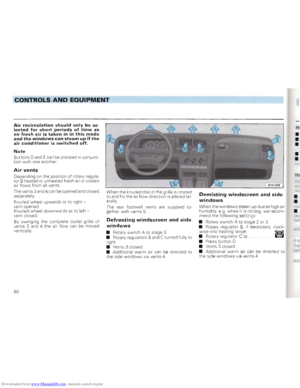 62
62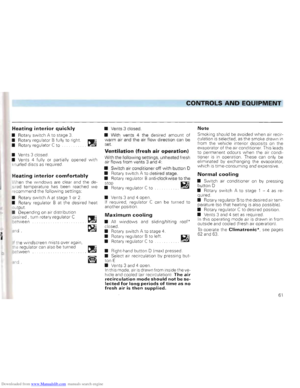 63
63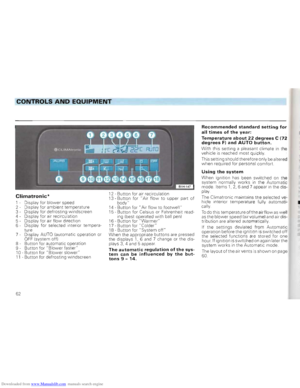 64
64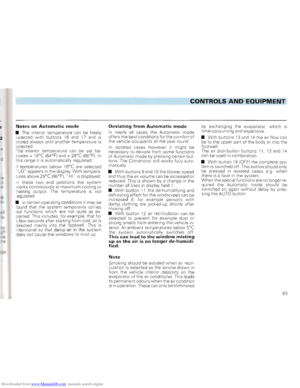 65
65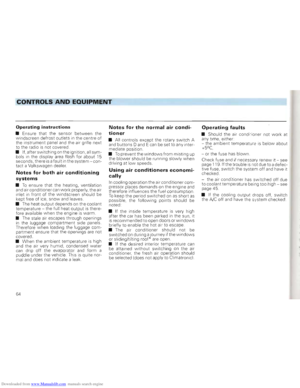 66
66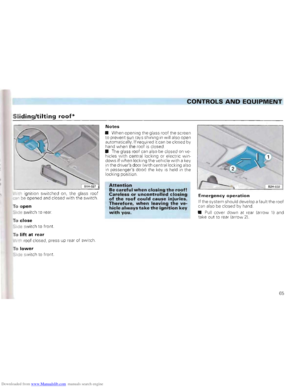 67
67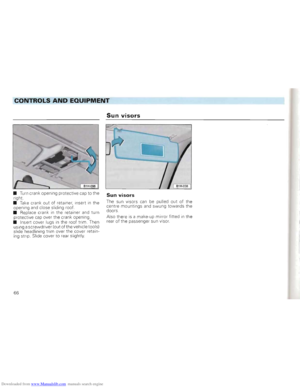 68
68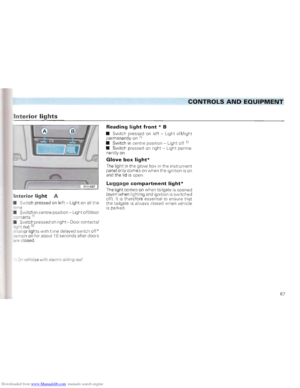 69
69 70
70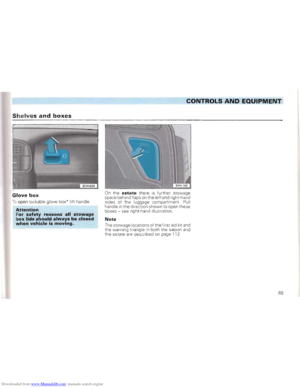 71
71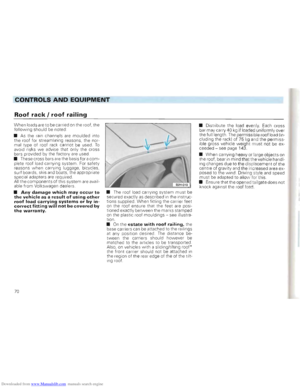 72
72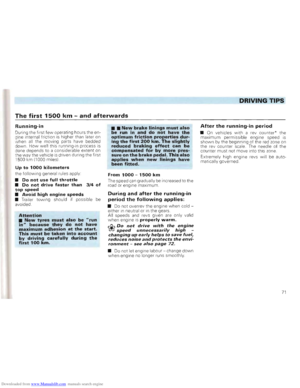 73
73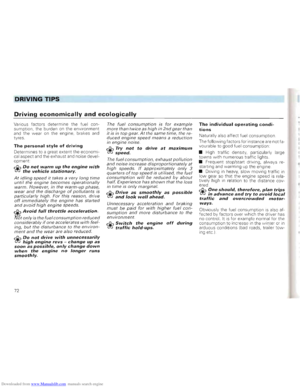 74
74 75
75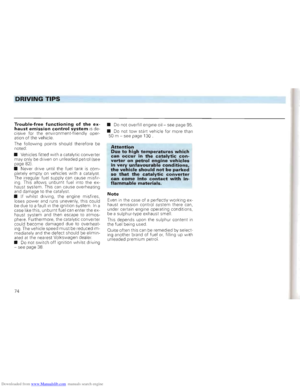 76
76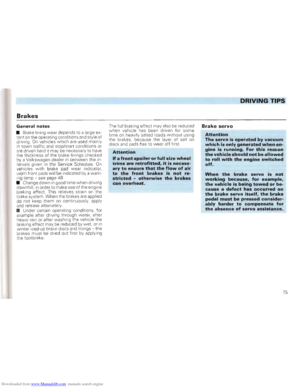 77
77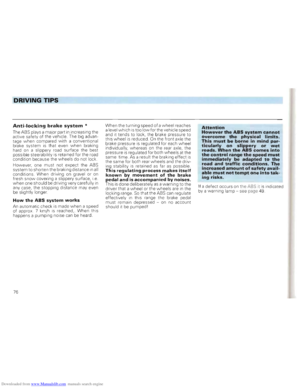 78
78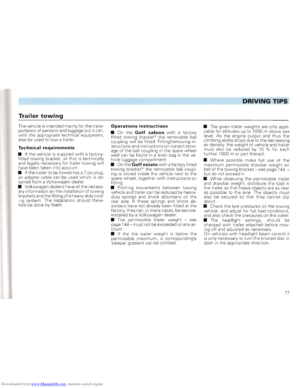 79
79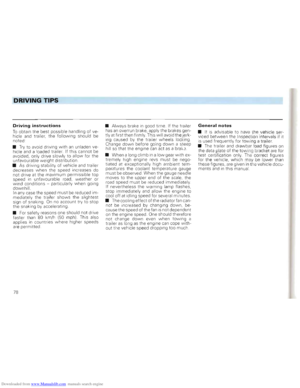 80
80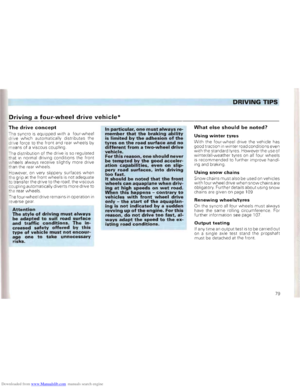 81
81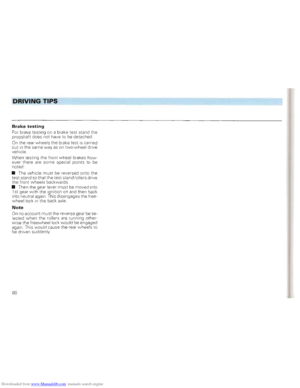 82
82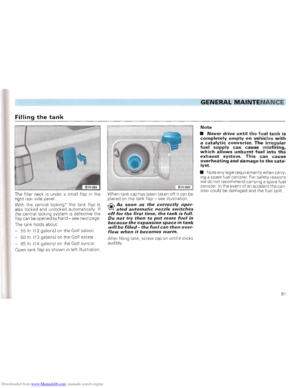 83
83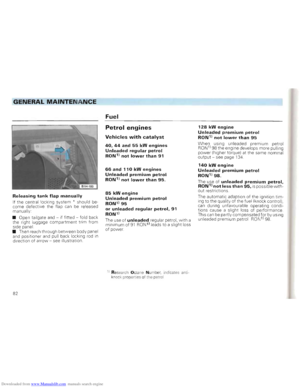 84
84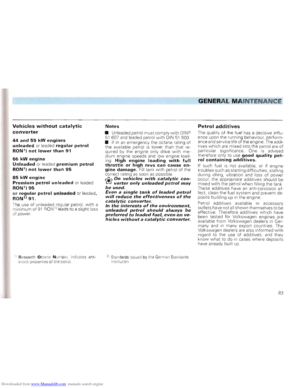 85
85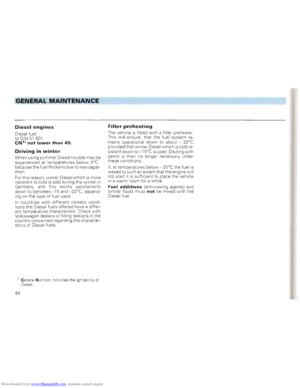 86
86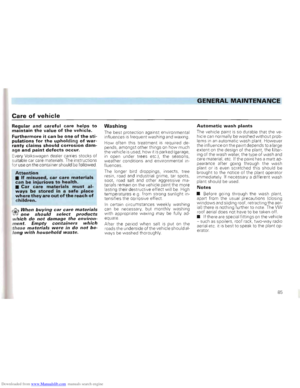 87
87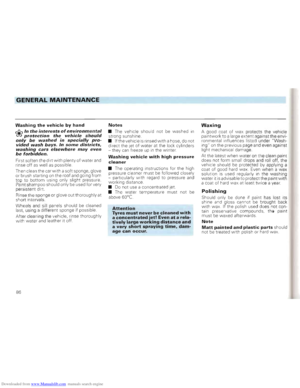 88
88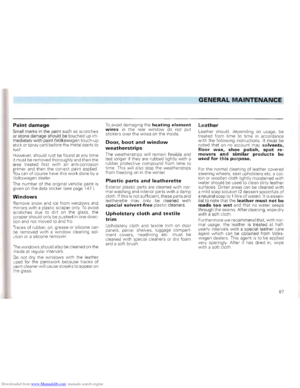 89
89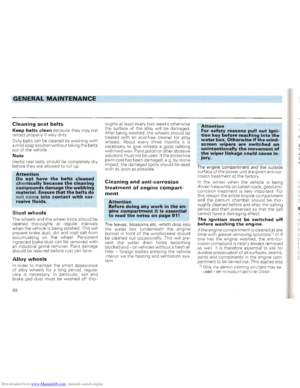 90
90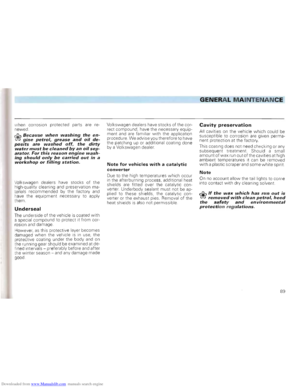 91
91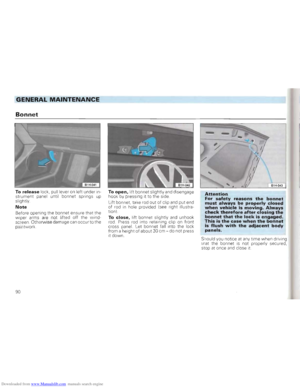 92
92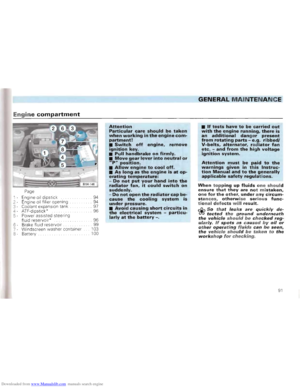 93
93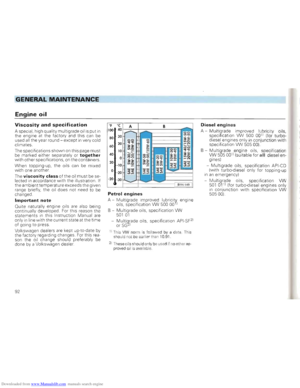 94
94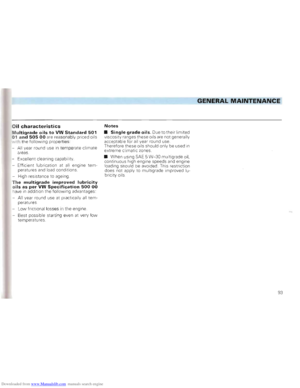 95
95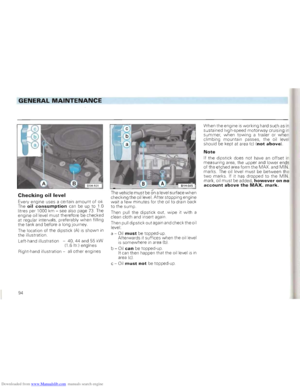 96
96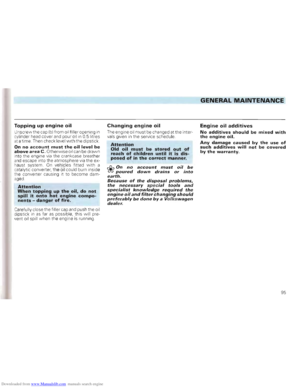 97
97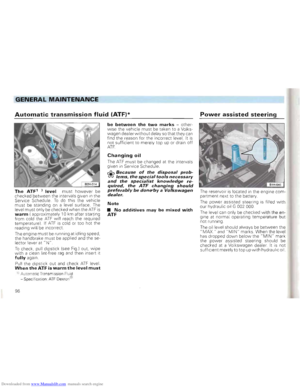 98
98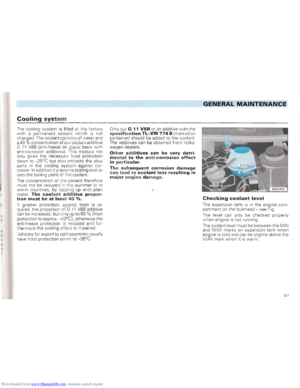 99
99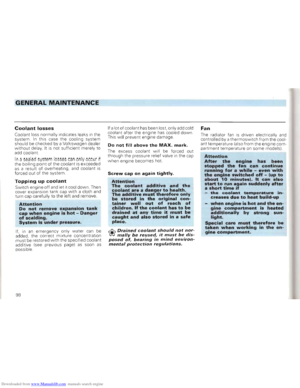 100
100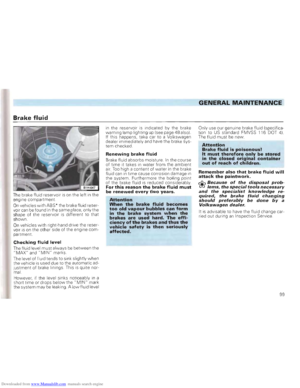 101
101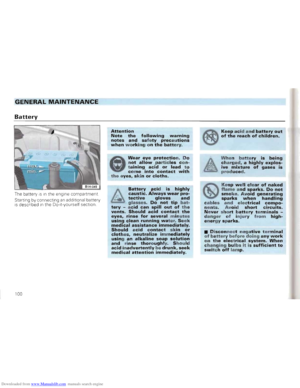 102
102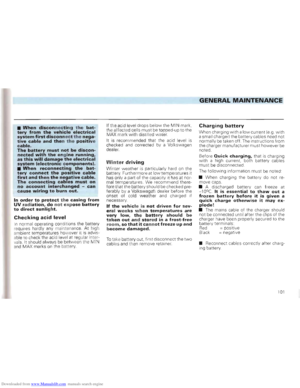 103
103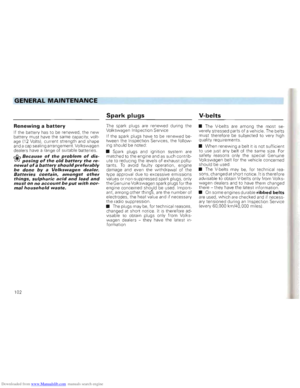 104
104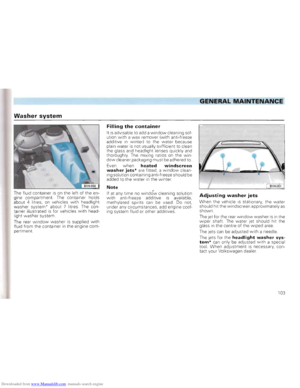 105
105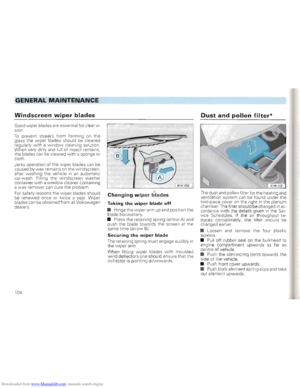 106
106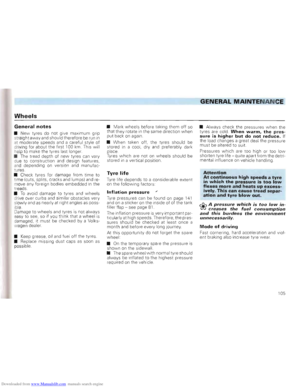 107
107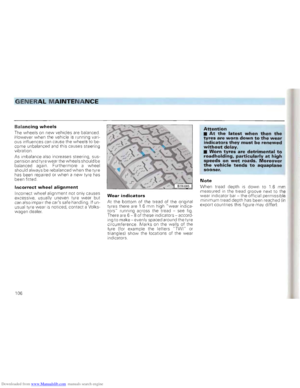 108
108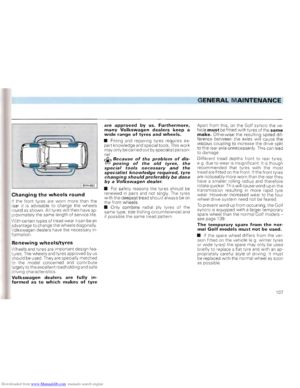 109
109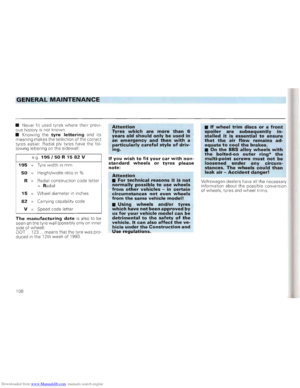 110
110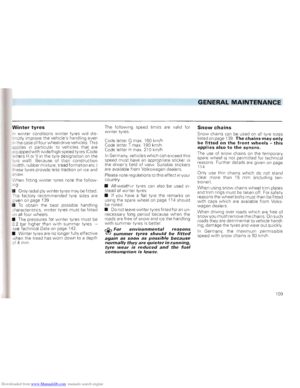 111
111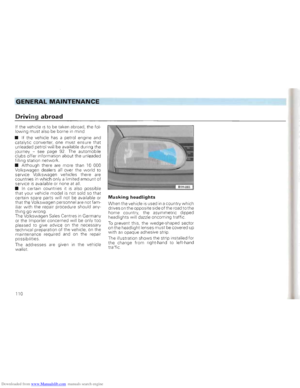 112
112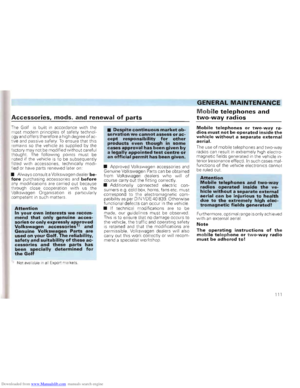 113
113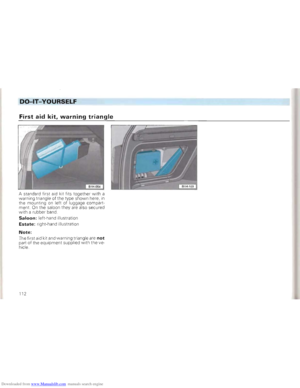 114
114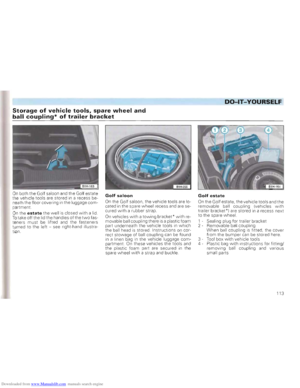 115
115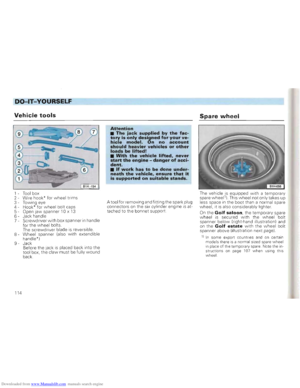 116
116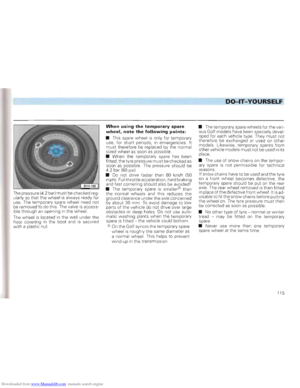 117
117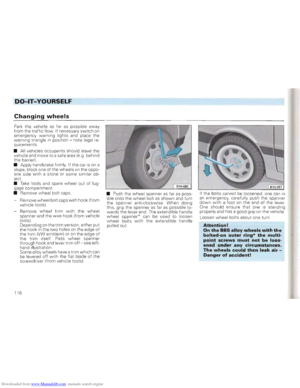 118
118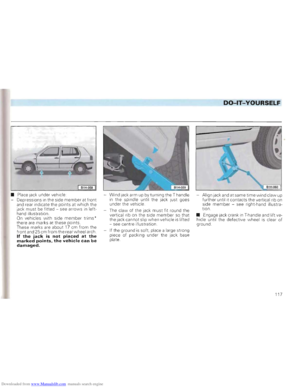 119
119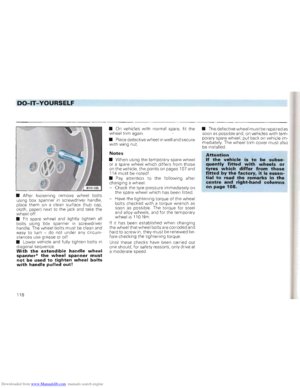 120
120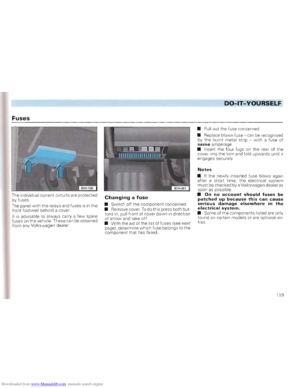 121
121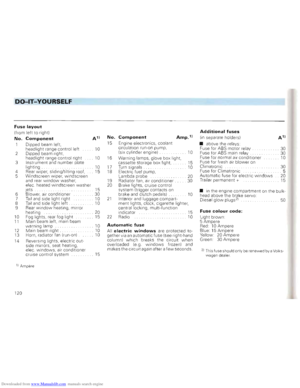 122
122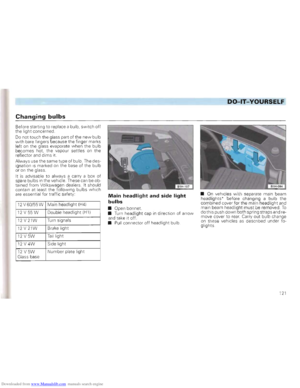 123
123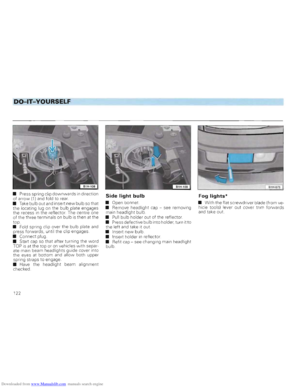 124
124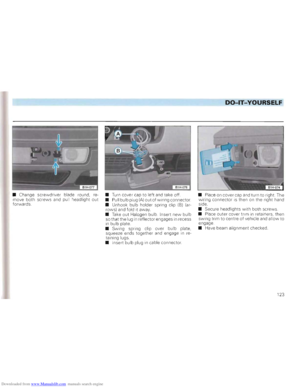 125
125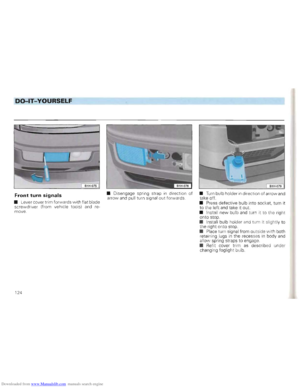 126
126 127
127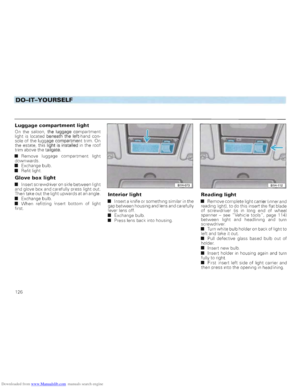 128
128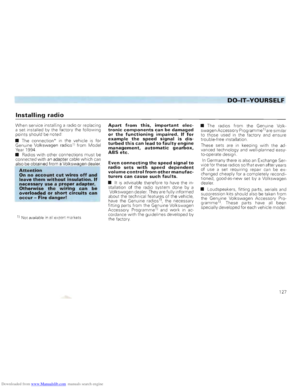 129
129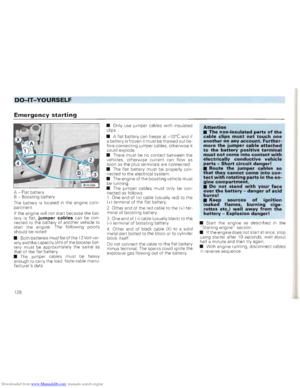 130
130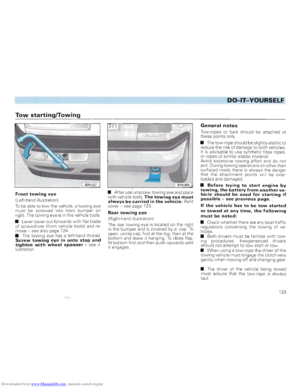 131
131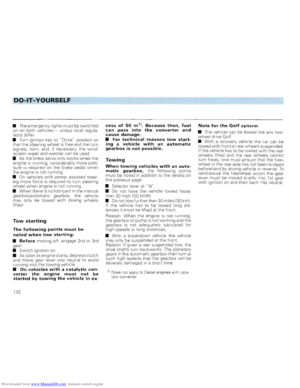 132
132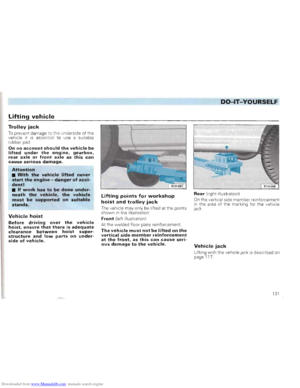 133
133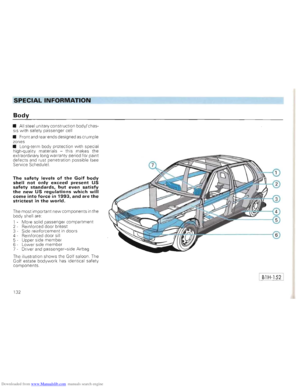 134
134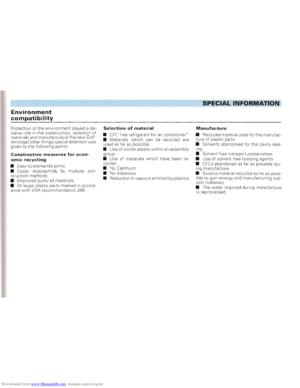 135
135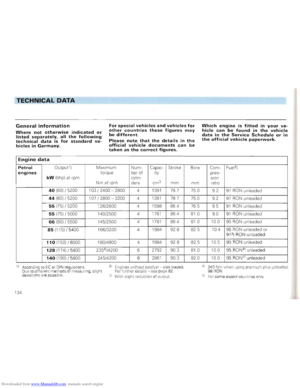 136
136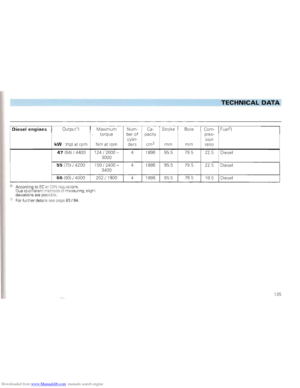 137
137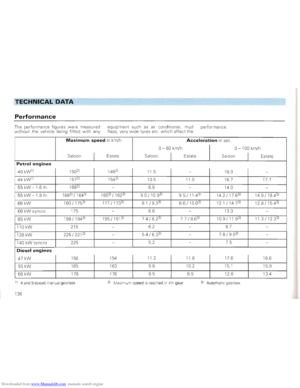 138
138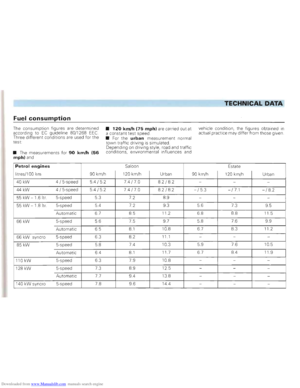 139
139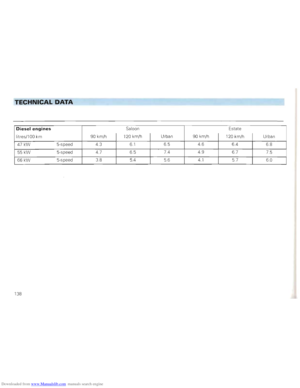 140
140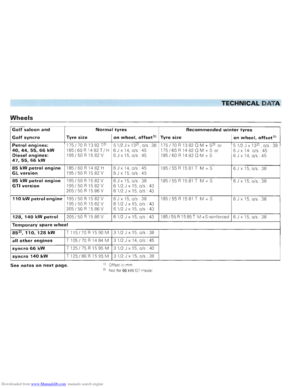 141
141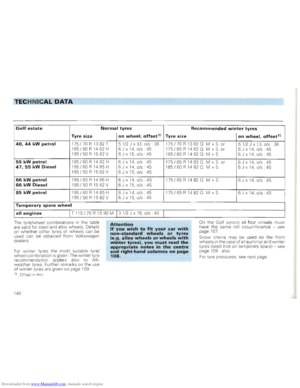 142
142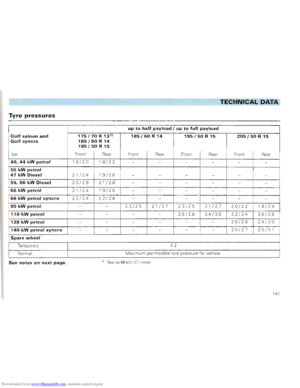 143
143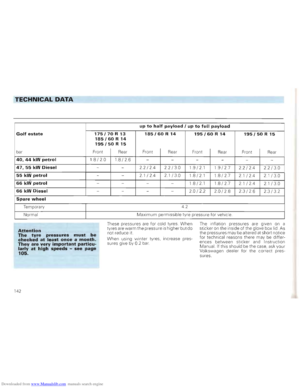 144
144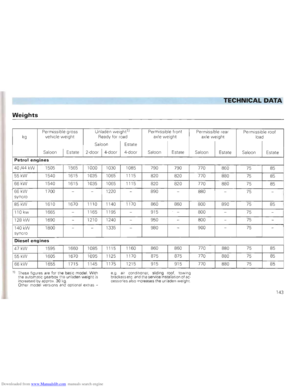 145
145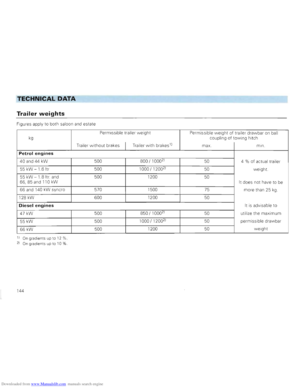 146
146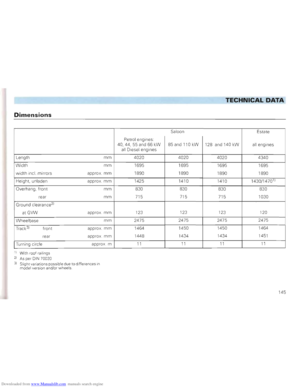 147
147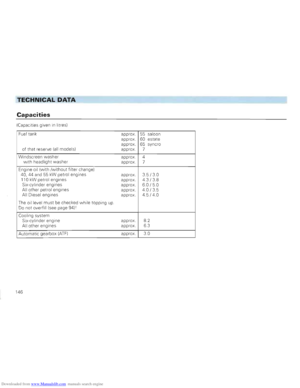 148
148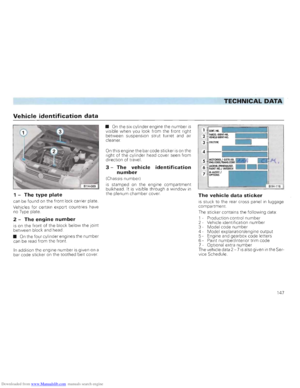 149
149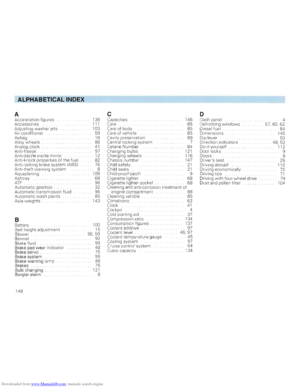 150
150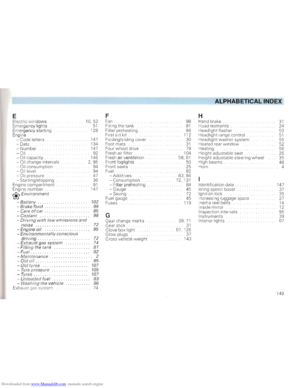 151
151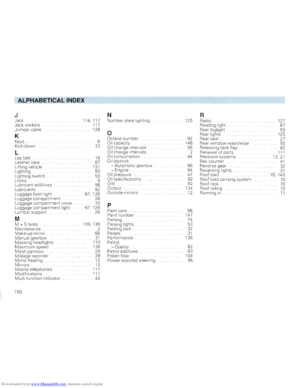 152
152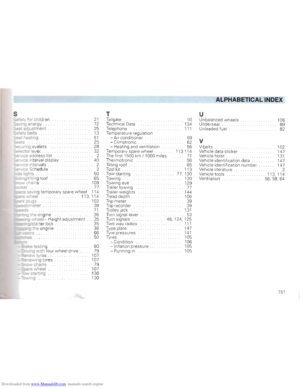 153
153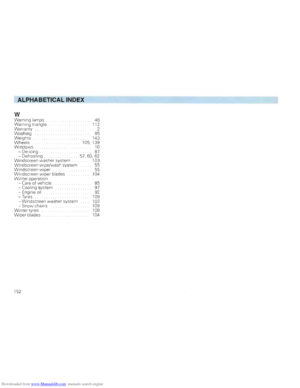 154
154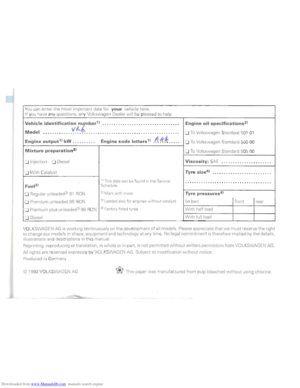 155
155






